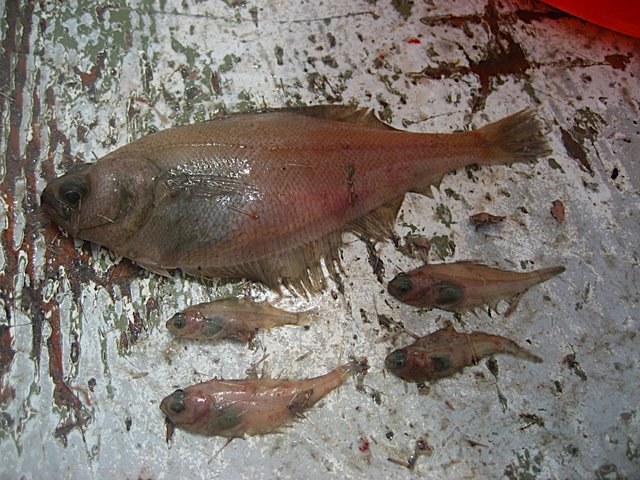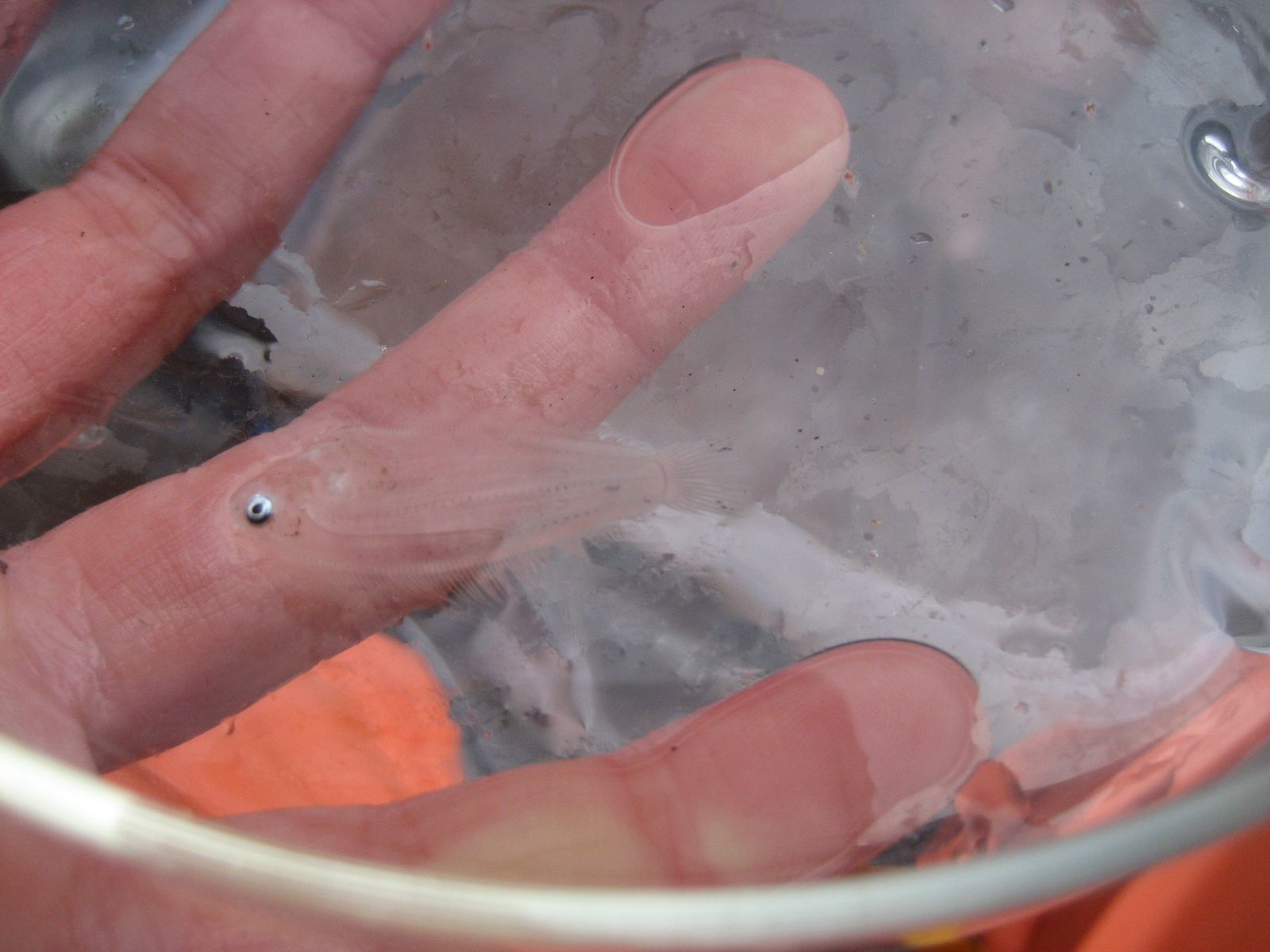

by Erin Loury, Ichthyology Lab
Have you ever stared in the mirror and convinced yourself that your eyes are different sizes? Even if they are, or even if one is a little higher than the other, don’t worry, you are still considered symmetrical. That is, you could draw a line down the middle of your body from head to toe, and your left and right sides would be more or less equal to each other, just mirror images. Most animals share this condition called bilateral symmetry, with left and right mirror images – everything from whales to ants. A few animals like sea urchins and jellyfish have radial symmetry, meaning that you can draw many lines through them to get mirror images (they’re symmetrical in a circular way).
Symmetry is so common than nature that scientists get pretty excited to study any animal that deviates from this norm. A bizarre and fascinating example is the asymmetry of flatfish – fish like halibut, sole, sanddabs, etc. – which can’t be divided into equal right and left sides. Instead, they have two eyes on one side of their head – which isn’t such a bad idea if you make your living with your other side buried in the sand. The crazy thing is that these fish aren’t born that way – they’re born with bilateral symmetry just like most other fish!

On our ichthyology class cruise last week, we pulled up examples of both the “before” and “after” flatfish conditions. The picture above is of a larval flatfish we found in the plankton. If you have to look closely at the photo, you can see that it still has only one eye on each side of its head! The fish will eventually undergo metamorphosis, during which its entire skull will twist, and one eye will migrate over to the other side of its head! The whole process takes between 5 days and a few hours, depending on the species of flatfish. This leaves flatfish with a blind side (the one with no eye), which it can keep buried in the sand. Check out the video below to see this metamorphosis in action!

